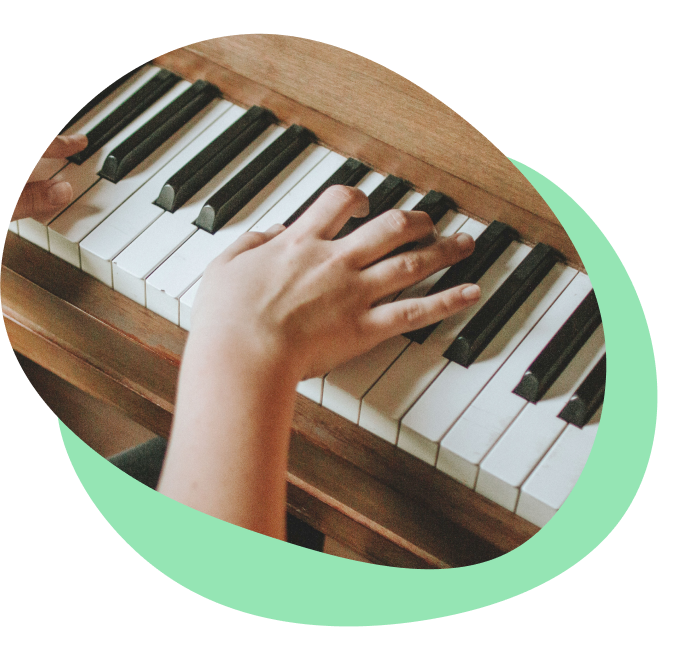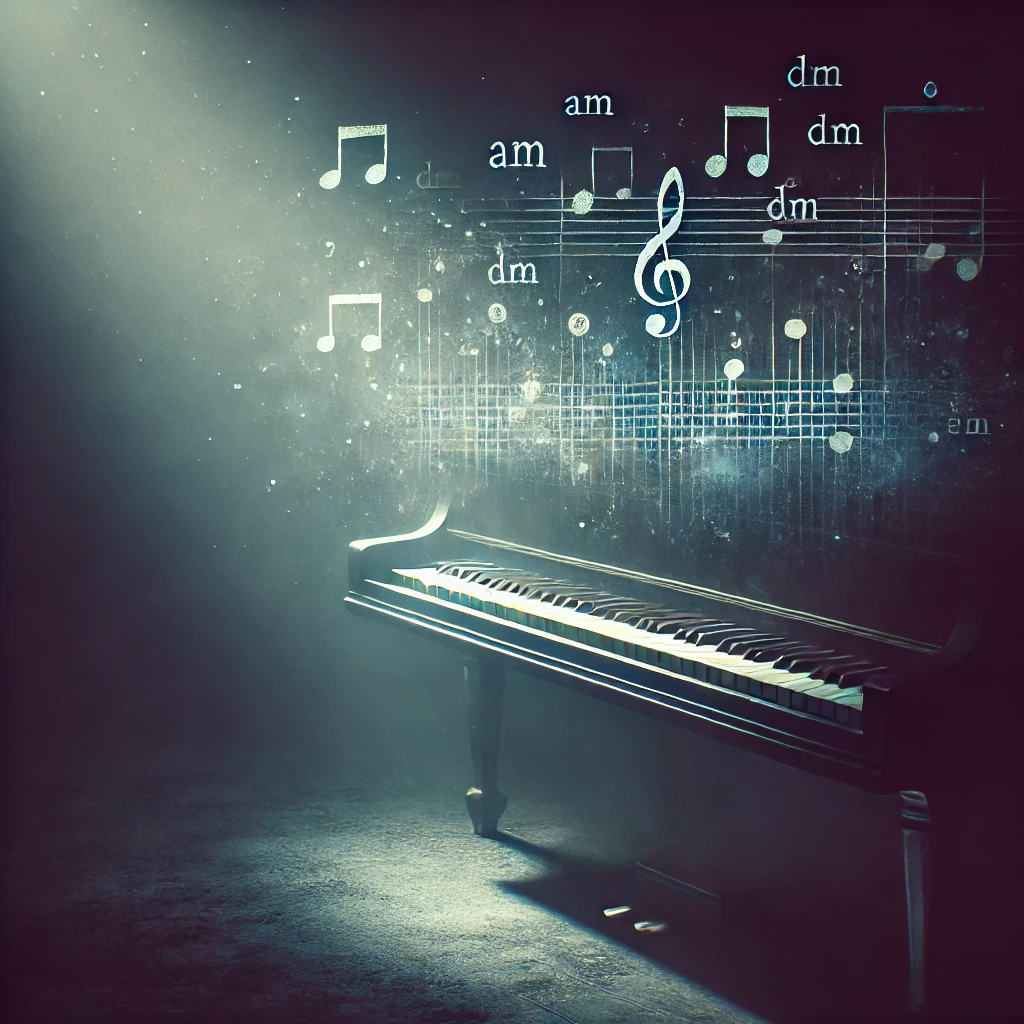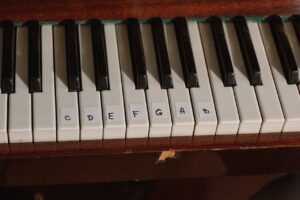Music has the power to stir emotions and nothing tugs at the heartstrings quite like sad chord progressions on the piano. Whether you’re composing your own piece or learning classics, these sad piano chords will help you create that wistful, nostalgic or melancholic feel you’re looking for. Below, we explore ten of the best sad chord progressions for beginners. You can easily learn famous songs that use these iconic progressions with the help of the Skoove app and our helpful chord charts. Let’s dive in!
- Fall in love with the music - Learn your favorite songs, at a level suitable for you.
- Enjoy interactive piano lessons - Explore courses covering music theory, technique chords & more.
- Get real-time feedback - Skoove's feedback tells you what went well and what needs practice.
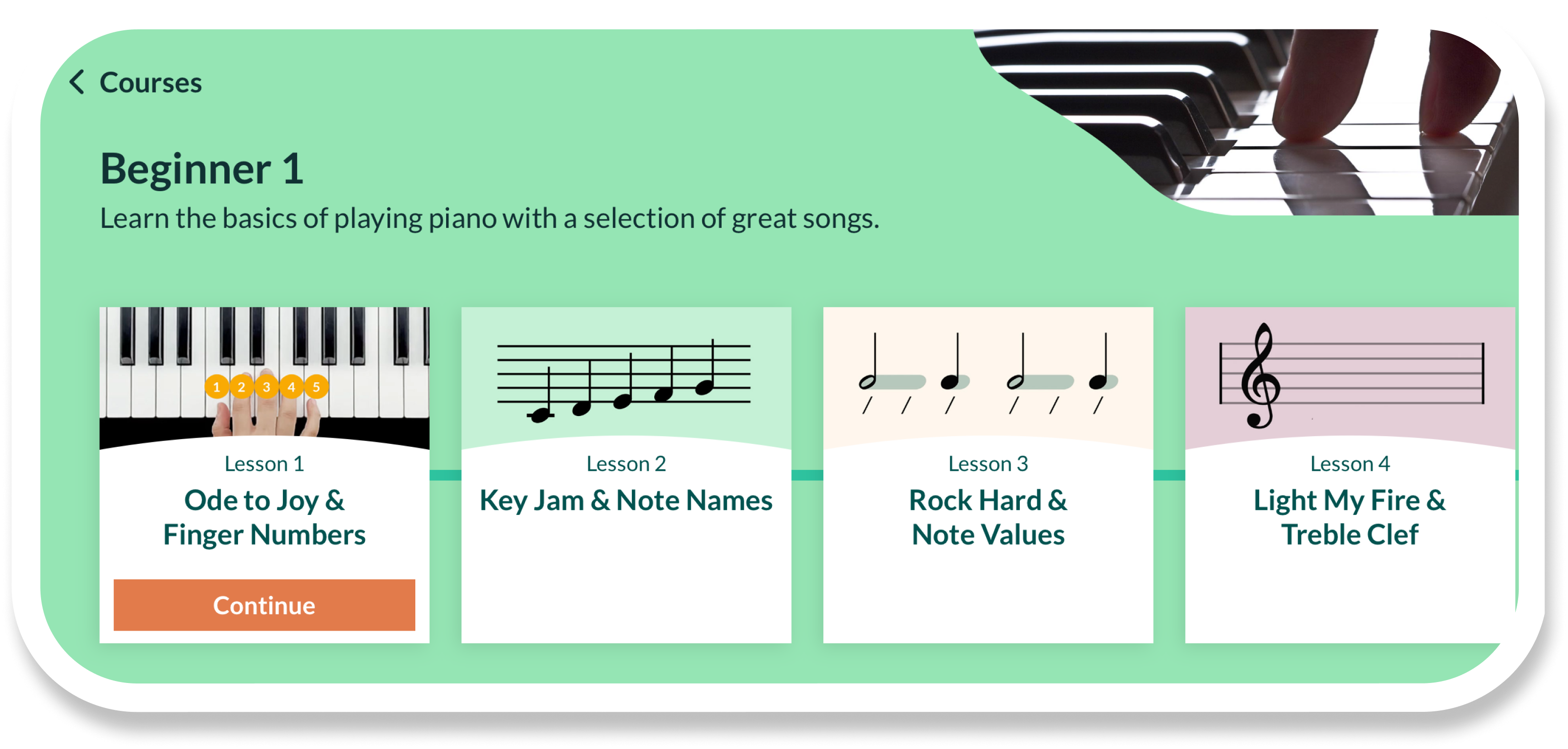
Autumn Leaves – Joseph Kosma: VI – ii – V- i
One of the most well-known sad chord progressions on piano, this sequence creates a deep, haunting atmosphere. It moves through a cycle of fourths progression, between major and minor chords, adding harmonic tension that resolves beautifully. This progression is widely used in both jazz and classical music. v
Progression: VI^7 – ii7 – V7 – i7
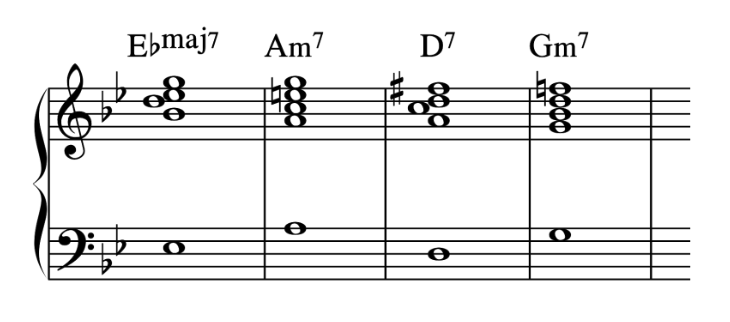
This progression is characteristic of jazz standards and ballads, such as Autumn Leaves and All The Things You Are, adding a sense of longing and melancholy. Chord inversions can make this chord progression sound even richer.
Alone Again Naturally – Gilbert O’Sullivan: ii7 – iv – V7 – i – iii
Alone Again Naturally by Gilbert O’Sullivan is a great song if you’re looking to explore some of the saddest chords. It creates a poignant, storytelling feel. It’s often used in introspective and emotional ballads, evoking a deep sense of melancholy.
Progression: ii7 – iv – V7 – i – iii
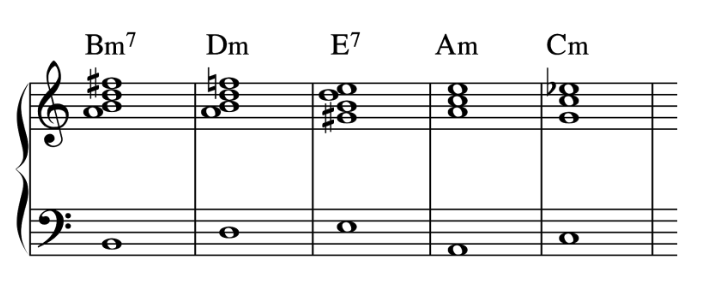
This emotional chord progressions creates a sense of yearning, the V7 chord wants to go to the i chord to resolve. This adds depth and longing through use of chord extensions. This is one of the saddest chord progressions, often used in heartfelt, introspective songs such as this one.
Back to Black – Amy Winehouse: i – iv – VI – V
This classic sad minor chord progression is common in soulful, expressive music. It captures a raw emotional intensity, making it a favorite for deeply personal compositions.
Progression: i – iv – VI – V
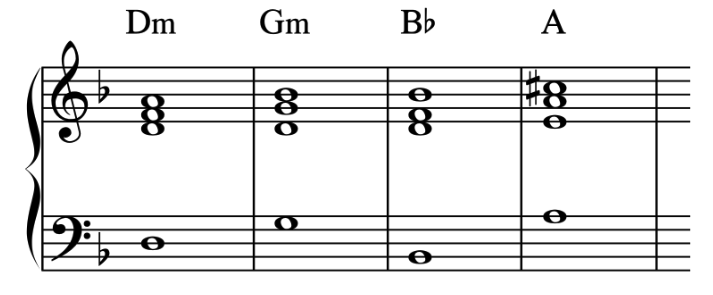
This combination of sad piano chord progressions emphasizes the transition between major and minor chords, intensifying the melancholy. The VI chord brings a surprise change in the pattern. This makes the music sound both sad and beautiful, just like in Back to Black.
The House of the Rising Sun – The Animals: i – III – IV – VI
This classic minor key progression is widely recognized. It has a rising quality that enhances its emotional depth. The use of a major chords in a minor context has a strikingly beautiful effect.
Progression: i – III – IV – VI
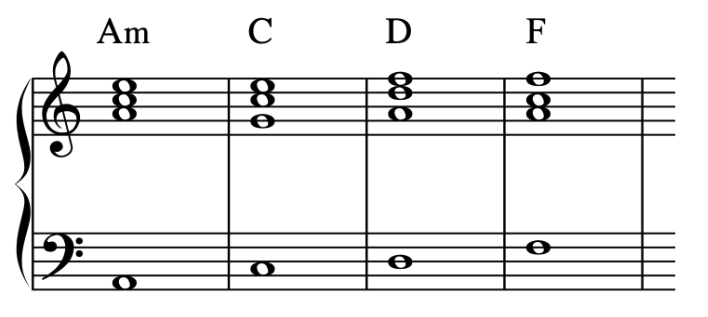
This minor key progression has an upward-pushing feel. The major chords give it some extra flavor. Ordinarily, the chord built on the fourth degree of the minor scale should be a minor chord. This change gives this progression its own unique sound.
Sakura – Naotaro Moriyama: VI – VII – v – i
A commonly used progression in J-pop and J-rock, this sequence carries a distinct sense of emotional movement, making it perfect for dramatic, sentimental melodies.
Progression: VI–VII–v–i
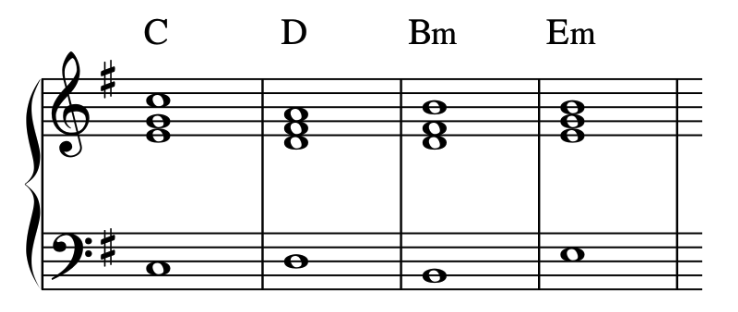
Also known as the ‘Royal Road Progression’, this sad chord progression creates a dreamlike emotional journey. The delayed resolution makes it feel winding and reflective, perfect for evoking bittersweet nostalgia.
Yesterday – The Beatles: I – vii7 – III7 – vi – vi/V
This iconic progression blends major and minor harmonies, capturing an unmistakable sense of nostalgia and longing. This is a must know for any musician who wants to learn sad song chord progressions.
Progression: I – vii7 – III7 – vi – vi/V
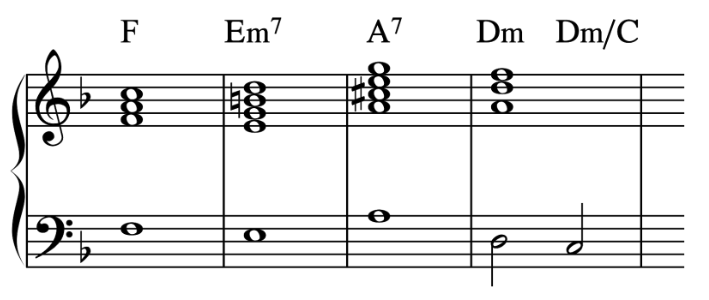
A beautifully crafted melancholic chord progressionThis chord progression moves between happy and sad chords, through the use of a secondary dominant making it sound emotional. The extra notes, seventh chords, add depth, creating the famous sad feeling in Yesterday.
Let Her Go – Passenger: vi – IV – V – iii
This emotional progression is widely recognized for its melancholic yet soothing feel, making it a go-to choice for sentimental ballads. It’s a standout as one of the more sad major chord progressions alluding to the minor key creating its distinct feel.
Progression: vi – IV – V – iii
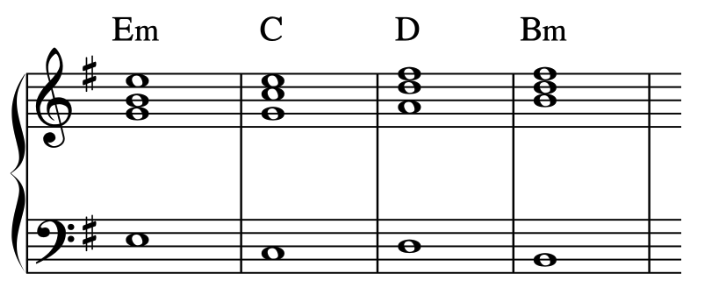
This recognizable sad song chord progression offers a deeply melancholic and yearning sound. The descending bassline effect in this sequence enhances its sorrowful tone.
Moonlight Sonata – Beethoven: i- VI – ii – V
This timeless classical piece relies on this progression to create a deeply introspective and brooding mood. This progression is the backbone of one of the most famous and widely listened to classical pieces of all time.
Progression: i – VI – ii – V
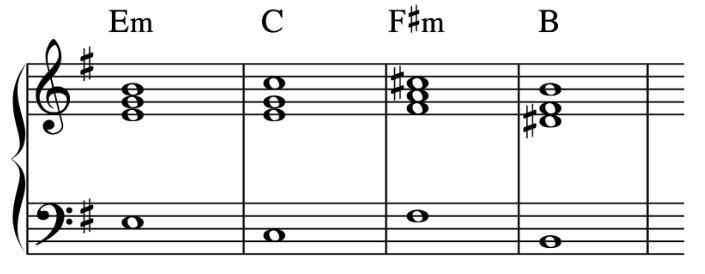
Moonlight Sonata is a masterclass in sad minor chord progressions. The beautiful voice leading creates a brooding, hypnotic feel, making it one of the most famous examples of melancholic chord progressions in classical music. It’s a quintessential classical sad piano chord progressions and a must know for beginners.
Shape of My Heart– Sting: i – VII – iv – V
A hauntingly beautiful sequence, this progression creates a reflective and deeply evocative musical experience. This progression achieves a profound emotional impact, especially in Shape of My Heart.
Progression: i – VII – iv – V
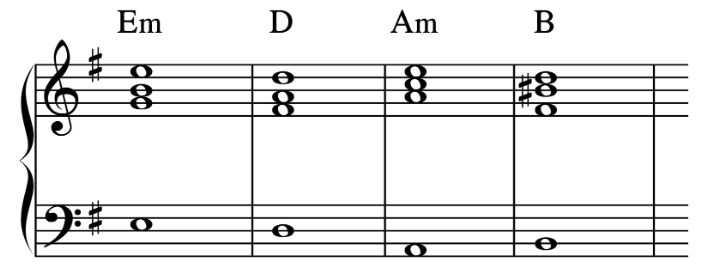
The descending bass combined with Sting’s introspective lyrics conveys a deep sense of contemplation and unresolved emotions. The harmonic tension lingers, making the listener feel a sense of longing and mystery, which perfectly complements the song’s storytelling style.
Hallelujah – Leonard Cohen: III – VI – VII – i – VI – VII – V7 – i
One of the most widely recognized sad progressions, this sequence shifts between major and minor harmonies, creating a powerful and deeply moving effect. Cohen’s use of these sad piano chord progressions enhances the song’s raw vulnerability, making it one of the most emotionally stirring pieces ever written.
Progression: III – VI – VII – i – VI – VII – V7 – i

The transition between major and minor chords mirrors the song’s themes of struggle, faith and sorrow. The lingering V7 chord before the i resolution leaves a feeling of longing, echoing the bittersweet tone of the lyrics through these haunting piano chords.
Learn to play these chord progressions
Famous songs with sad chord progressions are a great way to put your knowledge of piano chords to the test. Understanding chord progressions that sound sad and what makes them work is a must for any pianist. To explore these chord symbols and how to play them, check out Skoove’s tailor-made beginner chord progression courses.
Conclusion
Now you understand what the best chord progressions for sad songs are and how they have shaped some of the most iconic music ever composed. Sad chord progressions have an undeniable power to move listeners, evoking feelings of nostalgia, longing and deep emotion. By mastering these common melancholic chord progressions in music, you’ll enhance your ability to express emotions through the piano, creating pieces that truly connect with listeners.
Whether you’re playing timeless classics or composing your own sad piano chord progressions, let Skoove guide you through the intricacies of these beautiful harmonies. Start exploring today and bring new emotional depth to your music!
Author of this blog post:
Susana Pérez Posada

With over seven years of piano education and a deep passion for music therapy, Susana brings a unique blend of expertise to Skoove. A graduate in Music Therapy from SRH Hochschule Heidelberg and an experienced classical pianist from Universidad EAFIT, she infuses her teaching with a holistic approach that transcends traditional piano lessons. Susana’s writings for Skoove combine her rich musical knowledge with engaging storytelling, enriching the learning experience for pianists of all levels. Away from the piano, she loves exploring new places and immersing herself in a good book, believing these diverse experiences enhance her creative teaching style.
Published by Lydia Ogn from the Skoove team




